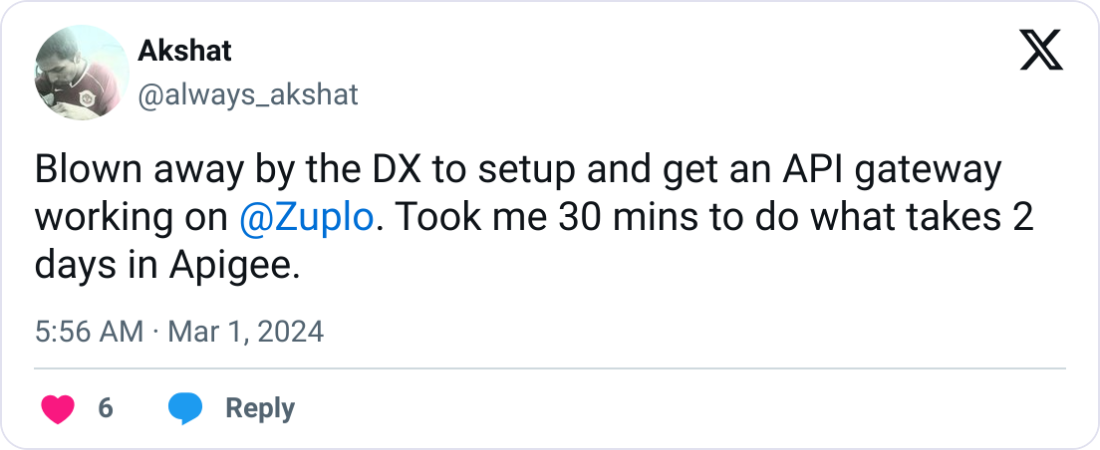Reliable webhooks are the invisible heroes of your API ecosystem—they wake everything up, trigger actions, and keep systems talking without constant polling. But with roughly 20% of webhook events failing in production according to Hookdeck research, robust testing isn't optional—it's essential for success.
This guide will transform you from webhook novice to webhook expert using battle-tested strategies that work across platforms and environments. Whether you're handling payment notifications, triggering build pipelines, or coordinating complex workflows, you'll discover practical approaches to ensure your webhook infrastructure stays reliable under pressure.
Keep reading to learn everything you didn’t know you needed to know about the world of webhook testing so you can unlock the full potential of your event-driven architecture.
- Webhook Fundamentals: The Magic Behind Real-Time APIs
- Why Skimping on Webhook Testing Will Cost You (Literally)
- The Fantastic Four: Testing Types You Can't Afford to Skip
- The Toolkit: Must-Have Resources for Webhook Testing
- Security First: Protecting Your Webhook Pipeline
- Dodging Common Pitfalls: Troubleshooting Like a Pro
- Advanced Tactics: Elevating Your Webhook Game
Webhook Fundamentals: The Magic Behind Real-Time APIs#
Webhooks are the caffeine shots of modern APIs—instead of constantly asking "anything new?" they shout "hey, something happened!" exactly when it matters. This push-based approach delivers real-time updates while slashing unnecessary API calls.
At its core, every webhook system includes five critical components: the webhook producer that detects events, an API gateway for routing and security, the recipient endpoint waiting for payloads, the payload itself (typically JSON), and security mechanisms like HMAC signatures.
We see webhooks driving real-time experiences everywhere—Stripe notifies merchants instantly when payments process, GitHub triggers builds when code changes, and countless SaaS platforms use them to power automation workflows. While the concept is simple (HTTP POST requests with payloads), building reliable webhook systems requires careful planning:
- Always use HTTPS to protect data in transit
- Implement HMAC signatures to verify payload authenticity
- Design robust retry mechanisms with exponential backoff
- Make webhook handlers idempotent to handle duplicate deliveries
- Implement comprehensive logging for troubleshooting
The payoff? Real-time user experiences, elegant scaling, and dramatically reduced API polling traffic. But webhooks come with challenges too—which is exactly why testing is so crucial.
Why Skimping on Webhook Testing Will Cost You (Literally)#
Let's be real—untested webhooks are a business disaster waiting to happen. Beyond just technical concerns, webhook failures directly impact your bottom line and reputation.
Security Vulnerabilities Become Gateways#
When security measures aren't tested, you're practically rolling out the welcome mat for attackers. We've seen everything from replay attacks to server-side request forgery that compromise entire systems—problems that thorough testing would have caught early.
Broken Business Processes, Not Just Code#
Failed webhooks don't just break technical systems—they break business processes. Imagine payment confirmations never arriving, leaving orders in limbo, or subscription events failing to trigger, causing billing systems to fall out of sync. These aren't just annoyances—they directly hit revenue.
Real Revenue Impact#
The business impact is real and immediate. For e-commerce operations, for instance, webhook failures translate directly to lost sales and inventory chaos. We've worked with companies where a single day of webhook disruption cost tens of thousands in revenue and weeks of cleanup.
Or, consider the cautionary tale of a major payment processor whose webhook system collapsed under a transaction spike. Their queue backed up, merchants couldn't confirm payments, and everyone lost substantial revenue during the outage. Proper load testing would have identified this breaking point before it became a crisis.
Reputation Damage That Lingers#
Beyond immediate financial losses, webhook failures erode trust in your platform. Developers who integrate with your API expect reliable event delivery. When webhooks fail repeatedly, they'll look for more dependable alternatives. In competitive API markets, reliability isn't just a technical metric—it's a key differentiator that directly impacts adoption rates.
Cascading Technical Debt#
Unreliable webhooks force developers to build complex workarounds. Teams end up creating redundant polling mechanisms, implementing excessive retry logic, and developing parallel verification systems—all of which add to maintenance burden and code complexity. What began as a simple webhook implementation gradually transforms into a tangled web of fallback systems that nobody wants to touch.
By prioritizing comprehensive webhook testing, you're not just preventing technical failures—you're protecting your entire business model.

Over 10,000 developers trust Zuplo to secure, document, and monetize their APIs
Learn MoreThe Fantastic Four: Testing Types You Can't Afford to Skip#

Creating bulletproof webhook systems requires a multi-layered approach—skip any layer, and you're leaving your system vulnerable. Each testing type reveals different problems, working together like a team of specialized doctors examining your code from different angles.
Unit Testing: The Foundation of Webhook Reliability#
Unit testing examines your webhook handling functions in isolation, focusing on critical components like payload parsing, signature verification, error handling, and database operations. This is where you verify that your webhook puzzle pieces actually fit together.
// Testing webhook signature verification
test("verifySignature rejects invalid signatures", () => {
const payload = JSON.stringify({ event: "user.created" });
const secret = "myWebhookSecret";
const signature = "invalid_signature";
expect(verifySignature(payload, secret, signature)).toBe(false);
});Popular frameworks like Jest, Mocha, or JUnit provide everything you need for effective webhook unit testing, with mocking capabilities that let you simulate external dependencies.
Functional Testing: Making Sure the Whole Dance Works#
Functional testing takes things to the next level by examining entire webhook flows from trigger to response. Tools like Postman make it easy to simulate both sides of the webhook conversation—sending custom payloads and validating exactly how your endpoints respond.
Focus your functional tests on complete workflows including webhook registration, end-to-end payload processing, authentication mechanisms, error handling, retries, and idempotency verification. This level of testing catches integration issues that unit tests might miss and ensures your webhook processing behaves correctly in real-world conditions.
Load Testing: Preparing for the Webhook Tsunami#
When webhooks hit your system like a tidal wave, will it stand or crumble? Load testing pushes your webhook endpoints to their limits, revealing how they'll perform under pressure.
- Tools like Apache Benchmark (ab), K6, or JMeter can simulate hundreds or thousands of concurrent webhook deliveries. Start by establishing performance baselines (we recommend sub-second response times), then gradually increase load until performance degrades.
- Watch for common bottlenecks like database connections, external API dependencies, memory utilization, and network bandwidth. Implementing proper rate limiting strategies can prevent overloads during load spikes. Understanding how to handle HTTP 429 errors is also crucial to designing resilient systems.
- Look for the elbow point where response times climb exponentially and make targeted optimizations based on your findings—scaling resources, implementing caching, optimizing database queries, or refactoring inefficient code. For mission-critical systems, incorporating effective API rate limiting practices can further enhance reliability and prevent system overload.
Profiling: Supercharging Your Webhook Performance#
Want webhook handlers that absolutely fly? Profiling systematically analyzes execution time and resource usage, transforming sluggish webhook processing into a high-performance machine.
APM tools like New Relic reveal slow spots in your code with beautiful precision. Flamegraphs visualize CPU and memory consumption, making bottlenecks jump out visually. And simple optimizations like adding caching or fetching only necessary fields can dramatically improve performance:
# Before optimization
def get_user_data(user_id):
return db.query("SELECT * FROM users WHERE id = ?", user_id)
# After optimization
@cache.memoize(timeout=300)
def get_user_data(user_id):
return db.query("SELECT id, name, email FROM users WHERE id = ?", user_id)
For high-volume webhook systems, consider asynchronous processing to acknowledge receipt quickly while handling heavy lifting in the background. And don't forget the power of edge computing—processing webhooks closer to users can dramatically reduce latency.
The Toolkit: Must-Have Resources for Webhook Testing#
Having the right tools makes webhook testing infinitely easier. Here are the absolute best for various testing scenarios:
Debugging Tools That Save Hours#
- Webhook.site provides an instant URL to receive webhooks, showing exactly what payload arrived, what headers were included, and when—perfect for quick validation without writing code.
- RequestBin offers similar functionality with a clean interface that makes inspecting webhooks dead simple.
Local Development Game-Changers#
- ngrok creates secure tunnels exposing your local server to the internet—run it on your laptop, and suddenly external services can send real webhooks to your development environment.
- localtunnel provides similar functionality if you prefer an open-source alternative.
Testing Frameworks Worth Their Weight in Gold#
- Jest dominates for testing Node.js webhook implementations with excellent mocking capabilities.
- Mocha with Chai assertions offers a flexible alternative many developers prefer for its readable syntax.
The most effective approach combines multiple tools—ngrok for local development, Jest for unit testing, Postman for functional tests, and dedicated monitoring in production.
Security First: Protecting Your Webhook Pipeline#

If your webhooks aren't secure, nothing else matters. We've seen companies suffer devastating breaches because they treated webhook security as an afterthought—don't make that mistake.
HMAC Signatures: Your First Line of Defense#
The gold standard for webhook security is HMAC signature validation:
- The webhook sender calculates a signature using a shared secret and the payload.
- This signature travels with the webhook in a header.
- Your receiver recalculates the signature using the same algorithm and secret.
- If signatures don't match exactly, you reject the webhook immediately.
This approach prevents attackers from sending fake or modified payloads. GitHub, Stripe, and other major platforms use HMAC-SHA256 signatures for exactly this reason.
Beyond Basic Security#
Never accept webhooks over unencrypted HTTP—HTTPS encryption should be your baseline. For truly rock-solid security, assign unique secret tokens to each webhook integration, implement IP allowlisting where feasible, and consider mutual TLS (mTLS) for high-security environments.
Preventing Common Attack Vectors#
Defend against replay attacks by including timestamps in webhook payloads and rejecting requests older than a few minutes. Implement aggressive rate limits on webhook endpoints to prevent abuse. And treat your webhook secrets like crown jewels—store them in environment variables or dedicated secret management systems, never hardcode them, and rotate them regularly.
Data Protection and Access Control#
Follow the principle of least privilege by only sending necessary data in webhook payloads. Make sure your error responses don't leak information that helps attackers. Implementing RBAC for API security ensures that only authorized users have access to specific actions and data. And keep watch over your webhook activities with comprehensive logging and alerts for unusual patterns.
Continuous Security Verification#
Don't assume your security measures work—verify them through penetration testing, security scans, and simulated attack scenarios. Security isn't a feature you add later—it's fundamental to webhook design from day one. Adhering to API security best practices is fundamental to webhook design from day one.
Dodging Common Pitfalls: Troubleshooting Like a Pro#
Let's be real—webhook systems break in predictable ways. Here's how to handle the most common issues:
When Webhooks Vanish Into the Digital Void#
Missing webhooks are usually caused by URL misconfiguration, firewall blocks, or incorrect authentication. The fastest diagnostic approach? Use Webhook.site as a temporary endpoint—if webhooks arrive there but not at your endpoint, the problem is on your side.
Banishing Timeout Demons#
Webhook timeouts happen when processing takes too long. Fix them by:
- Separating receiving from processing—acknowledge receipt immediately, then process asynchronously
- Using message queues like RabbitMQ or SQS to buffer incoming webhooks
- Optimizing database operations with proper indexing
Preventing Duplicate Headaches#
Webhooks sometimes arrive more than once. Make your system robust with idempotency—design handlers so running them multiple times with the same data produces identical results:
async function handleWebhook(payload) {
const eventId = payload.id;
// Check if we've already processed this event
const alreadyProcessed = await db.webhookEvents.findOne({ eventId });
if (alreadyProcessed) {
console.log(`Skipping duplicate event ${eventId}`);
return { status: "already_processed" };
}
// Process the webhook...
// Record that we've processed this event
await db.webhookEvents.insert({ eventId, processedAt: new Date() });
}Content Type Confusion Fixes#
Different webhook providers use different content types. Always check the Content-Type header and parse accordingly:
function parseBody(request) {
const contentType = request.headers["content-type"];
if (contentType.includes("application/json")) {
return JSON.parse(request.body);
} else if (contentType.includes("application/x-www-form-urlencoded")) {
return new URLSearchParams(request.body);
} else {
throw new Error(`Unsupported content type: ${contentType}`);
}
}Effective webhook logging saves hours of debugging—record event types, timestamps, IDs, and use correlation IDs to trace a webhook's journey through your system.
Advanced Tactics: Elevating Your Webhook Game#
Want webhook systems that survive anything? These advanced strategies separate amateurs from pros:
- Implement Chaos Engineering by deliberately breaking things—drop webhook deliveries, inject latency, or disable dependencies—to see how your system fails and make it stronger.
- Use Contract Testing to prevent misunderstandings between webhook senders and receivers by defining explicit payload format contracts.
- Deploy with Feature Flags to roll out webhook changes safely to a small percentage of traffic first.
- Set up Synthetic Monitoring that proactively sends test events through your system to verify delivery works continuously.
- Try A/B Testing with different webhook implementation versions to let data decide which performs best.
For mission-critical webhook systems, this comprehensive approach sets you up for success.
From Webhook Worries to Webhook Wins#
Mastering how to test webhooks and events isn't just a technical exercise—it's your insurance policy against integration failures that can bring your entire system down. Building truly reliable webhook systems requires unit tests to verify core components, functional tests to confirm end-to-end workflows, load tests to handle traffic spikes, and performance profiling for optimization. Skip any of these, and you're gambling with your system's reliability.
As the API landscape becomes increasingly event-driven, the quality of your webhook implementations directly impacts your competitive position. By implementing comprehensive testing strategies today, you're not just solving current issues—you're future-proofing your integrations for tomorrow's connected world.
Ready to transform your webhook reliability? Start by evaluating your current approach against the strategies we've discussed and implement a testing pipeline that covers all four critical areas. Your users will thank you, your system will be more resilient, and you'll sleep better at night knowing your webhooks deliver—every time. Book a call with the Zuplo team today and see how our platform can supercharge your webhook testing and management capabilities.